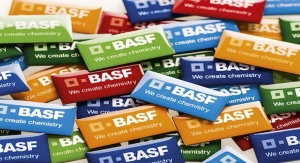07.10.18
BASF is investigating the possibility of building a highly-integrated “Verbund” chemical production site in the South Chinese province of Guangdong. Martin Brudermüller, BASF’s chairman of the Board of Executive Directors, and Lin Shaochun, executive vice governor of Guangdong Province, signed a non-binding Memorandum of Understanding in Berlin, in the presence of Germany’s Chancellor Angela Merkel and the Chinese Premier Li Keqiang.
The Verbund site in Guangdong would be BASF’s largest investment and would be operated under the sole responsibility of BASF. China – with a world market share of approximately 40% – is the largest chemical market, and dominates the growth of the global chemical production. The investment is estimated to reach up to $10 billion by completion of the project around 2030. The first plants could be completed by 2026 at the latest.
In the initial phase, the BASF project would include petrochemical plants. A steam cracker with a planned capacity of 1 million metric tons of ethylene per year would be the starting point of the value chains at the new integrated site. In the next phases, plants for more consumer-oriented products and solutions would be built, to serve sectors like transportation or consumer goods. The site would ultimately be the third-largest BASF site worldwide, following Ludwigshafen, Germany, and Antwerp, Belgium.
Guangdong province is home to customers from these key industries, as well as other fast-growing industries. With more than 110 million residents, Guangdong is the most populous province in China. Its gross domestic product, currently growing at 7% annually, already exceeds that of Spain and will soon have reached that of South Korea.
At the new site, BASF intends to implement a comprehensive smart manufacturing concept based on cutting-edge technologies. In the future, customers based in South China would be supplied from this high-tech Verbund site.
Globally, BASF currently operates six Verbund sites: two in Europe (Ludwigshafen, Germany; Antwerp, Belgium), two in North America (Freeport, TX, USA; Geismar, LA, USA) and two in Asia. The Verbund site in Nanjing, China, established in 2000, is a 50:50 joint venture with Sinopec, while the Verbund site in Kuantan, Malaysia, established in 1997, is a 60:40 joint venture with Petronas.
The Verbund site in Guangdong would be BASF’s largest investment and would be operated under the sole responsibility of BASF. China – with a world market share of approximately 40% – is the largest chemical market, and dominates the growth of the global chemical production. The investment is estimated to reach up to $10 billion by completion of the project around 2030. The first plants could be completed by 2026 at the latest.
In the initial phase, the BASF project would include petrochemical plants. A steam cracker with a planned capacity of 1 million metric tons of ethylene per year would be the starting point of the value chains at the new integrated site. In the next phases, plants for more consumer-oriented products and solutions would be built, to serve sectors like transportation or consumer goods. The site would ultimately be the third-largest BASF site worldwide, following Ludwigshafen, Germany, and Antwerp, Belgium.
Guangdong province is home to customers from these key industries, as well as other fast-growing industries. With more than 110 million residents, Guangdong is the most populous province in China. Its gross domestic product, currently growing at 7% annually, already exceeds that of Spain and will soon have reached that of South Korea.
At the new site, BASF intends to implement a comprehensive smart manufacturing concept based on cutting-edge technologies. In the future, customers based in South China would be supplied from this high-tech Verbund site.
Globally, BASF currently operates six Verbund sites: two in Europe (Ludwigshafen, Germany; Antwerp, Belgium), two in North America (Freeport, TX, USA; Geismar, LA, USA) and two in Asia. The Verbund site in Nanjing, China, established in 2000, is a 50:50 joint venture with Sinopec, while the Verbund site in Kuantan, Malaysia, established in 1997, is a 60:40 joint venture with Petronas.




























